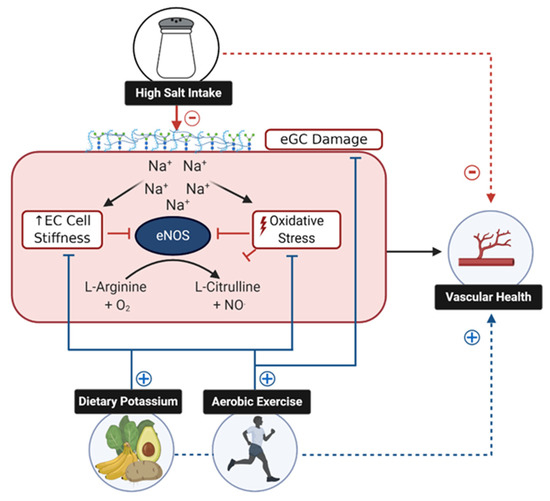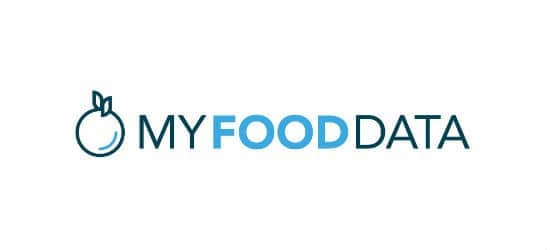I just finished reading the book
The Salt Fix, and it addresses many topics which have come up in various threads here so I am posting some highlights, along with a few other items not covered in the book. The book has been out about ten years and I have heard many podcasts with the author, but the book covers many interesting details I don’t remember from any of the podcasts. So for those who like to read, I strongly recommend it, not only because of the useful information it contains, but because it is an ongoing example of how bad information is perpetuated to this day despite many lines of evidence and logic strongly suggesting that minimizing salt/sodium is terrible advice.
To summarize the book’s message in one sentence, the body can easily deal with too much salt in all but very rare extremes, however too little salt is surprisingly easy to achieve (especially for people who sweat a lot as most of us here between sauna and activity are likely doing, or who take drugs that have the side-effect of lowering sodium) and creates many non-intuitive forms of damage that the body cannot overcome without salt. (I am using salt and sodium interchangeably here, although technically sodium is a subset of salt.) A few highlights from the book include:
- Low Salt intake can lower libido and fertility, so those looking for things to raise either should err on the higher side of salt intake. This seems to be a very under-publicized issue given all the threads here and elsewhere looking for libido-boosting methods.
- Low potassium intake is far more likely to cause high blood pressure than high salt, and potassium should be one of the first things to look at to optimize blood pressure
- Low salt will raise heart rate and blood viscosity (both of which are harmful) to a degree that outweighs any benefit from a minor lowering of blood pressure, if it were to occur.
- Low salt can actually raise blood pressure in some cases and the negative of low salt extends to many body systems that have nothing to do with blood pressure
- There are commonly used drugs that can lower the amount of sodium in the body which would make avoiding salt even more dangerous.
The book is extensively referenced, and while I don’t have the knowledge to personally validate everything in it, the author cites numerous examples that back up the logic of his arguments, such as non-industrialized tribes with very low salt intake who also have very low fertility, to cite just one example. My only quibble with the book is that the author spends a lot of time making the case that sugar is causing much of the harm that salt has been blamed for, however more recently it has become clearer that excess intake of omega-6 fats is likely just as big a factor as sugar, however that doesn’t change the basic message of the book.
While not mentioned in the book, a couple of items to be aware of:
- People with large upper arms may often need a larger-than-standard cuff to get an accurate reading, and the standard cuffs may tend to read too high.
- Blood pressure readings can vary a lot so numerous readings under varying circumstances are necessary to start to get an accurate picture
- Blood pressure can tend to be higher in cold conditions
- If you are someone who doesn’t sweat very much in situations where you should like a sauna or working outdoors in the heat, this can be a sign that your body is low on something (like Iodine) that normally would be lost in sweat but which your body is trying to conserve. Sweat is also a key part of the body’s detox system and not something that you want to minimize.
Personally, since I raised my salt intake (especially in my pre-workout concoction) I have seen no rise in my blood pressure and if anything it has dropped a bit although that could be just random variation.
Idk if it’s random. Ever since I started putting Celtic sea salt in my sparkling water everyday, along with liwuid magnesium chloride (which is known to relax blood vessel lining) I have not only seen my blood pressure be consistently perfect, but I’ve also seen my hct consistently stay around the 49-51 range, while before it hovered closer to 53-54. And before when my HCT was up, I was taking much less androgens. There definitely seems to be something to this
I’ve followed Dr brownsteins work for years now, mostly in regards to iodine, but he also wrote a similar book to the one ur referring to, called “salt your way to health”
But I think they’re both pretty spot on as far as low potassium being more of an issue than high sodium, when it comes to blood pressure and fluid regulation. Dr brownstein does feel like the type of salt makes a huge difference, however, which I currently agree with. He encourages people to use either Celtic sea salt, or redmonds real salt. Here’s a really quick clip of him explaining why he feels these salts are better, and why table salt can possibly cause harm
oh and I also use salt preworkout. I make a drink with some Celtic sea salt and some organic coconut water, and just sip that throughout my workout
(12:30 in he talks about unrefined salt briefly)
(here’s on where he talks about salt and asthma real quick. Go to 1:28:40)
(this is another really good overall interview with a guy that’s an expert on salt. Highly recommend)
The Science of Salt: How This Essential Nutrient Transforms Athletic Performance and Health
A comprehensive discussion with Dr. James DiNicolantonio on the misunderstood role of salt in human health and performance
Introduction
Salt has been unfairly demonized in modern nutrition, treated as a villain in the fight against cardiovascular disease. However, emerging research reveals that salt—sodium chloride—is not only essential for human health but may be one of the most powerful tools for optimizing athletic performance and overall wellness. This article explores the groundbreaking research and clinical insights shared by Dr. James DiNicolantonio, a cardiovascular research scientist who has published nearly 200 papers and authored extensive research on salt's role in human physiology.
The Performance Benefits of Salt
Salt as Nature's Vasodilator
Salt functions as one of the most effective natural vasodilators available to athletes. When we exercise, we lose substantial amounts of salt through sweat—typically half a teaspoon to a full teaspoon per hour of intense activity. Competitive athletes can lose up to 6,000 milligrams of sodium per hour, which is three times the daily recommended intake according to current dietary guidelines.
Dr. DiNicolantonio explains that salt provides what he calls the "six factors of fitness":
Temperature regulation - Helps the body cool efficiently through enhanced sweating
Reduced heart rate - Allows for longer, more intense workouts
Increased blood circulation - Reduces muscle cramping and improves oxygen delivery
Acid buffering - Assists in removing hydrogen ions from cells through sodium-hydrogen transporters
Enhanced vasodilation - Improves heat release and blood flow
Reduced fatigue - Prevents the tissue salt depletion that characterizes overtraining syndrome
Pre-Workout Salt Loading
The optimal strategy for athletic performance involves consuming salt 20 minutes before exercise. Dr. DiNicolantonio recommends taking half a teaspoon of high-quality mineral salt (such as Redmond Real Salt) dry, followed by water. This pre-loading approach ensures adequate sodium levels are available when sweating begins, preventing the cascade of physiological problems that occur with salt depletion.
The Physiology of Salt Deficiency
Hormonal Disruption
When sodium intake drops below 3,000 milligrams per day, the body activates stress hormone systems that should only function during acute stress. Noradrenaline and adrenaline become chronically elevated, while aldosterone and renin-angiotensin—hormones that stiffen arteries—increase dramatically. These are the same hormones that medications are designed to block to prevent cardiovascular events.
Metabolic Consequences
Salt restriction triggers several concerning metabolic changes:
Elevated heart rate - Often stronger than any blood pressure reduction
Increased insulin resistance - Making fat storage more likely per calorie consumed
Elevated triglycerides and LDL cholesterol
Decreased HDL cholesterol
Increased uric acid levels
Adrenal Stress and Burnout
Chronic low-salt diets force the adrenal glands to continuously produce aldosterone, potentially leading to adrenal hypertrophy and eventual burnout. This process has been demonstrated in animal studies and may contribute to the condition commonly referred to as adrenal fatigue.
Clinical Signs of Salt Deficiency
Physical Symptoms
Common signs of salt deficiency include:
Dizziness when standing from a seated position
Elevated heart rate (especially upon standing)
Fatigue and weakness
Muscle cramps and spasms
Decreased exercise capacity
Poor capillary refill (when pressing fingernails)
Laboratory Findings
Blood work may reveal:
Elevated BUN (blood urea nitrogen) - Often dismissed as mild dehydration but actually indicating salt deficiency
Hyponatremia - Low blood sodium levels, affecting over 6 million Americans annually
Low fractional excretion of sodium - Indicating the body is desperately conserving salt
Elevated calcium and magnesium in urine - Suggesting mineral depletion from bones
POTS and Orthostatic Issues
Postural Orthostatic Tachycardia Syndrome (POTS) affects approximately 3 million Americans, predominantly women. This condition, characterized by heart rate increases of over 30 beats per minute when standing, often responds dramatically to increased salt intake.
The Historical Context of Salt Consumption
Ancient and Traditional Diets
Throughout human history, salt consumption has been substantially higher than current recommendations:
Roman armies consumed 25+ grams of salt daily
16th century Swedes consumed up to 100 grams daily
Traditional preservation methods relied heavily on salt before refrigeration
Evolutionary Perspective
The argument that humans evolved on low-salt diets is fundamentally flawed. When consuming whole animals (as our ancestors did), the total sodium intake from blood, organs, and tissues would have been substantial. A single deer provides approximately 30 days' worth of sodium based on current dietary guidelines.
The Quality Factor: Not All Salt Is Created Equal
Problems with Table Salt
Standard table salt lacks the mineral cofactors found in natural salt sources:
Missing magnesium, calcium, and trace minerals
Often contains anti-caking agents
Lacks the iodine content found in quality sea salts
Recommended Salt Sources
Redmond Real Salt - Dr. DiNicolantonio's top recommendation, sourced from ancient dried ocean beds, avoiding modern ocean pollution including microplastics.
Celtic Sea Salt - Highest in magnesium content (40mg per 10g), providing up to 20% of daily magnesium needs.
Himalayan Pink Salt - Highest in potassium among mineral salts, though amounts are still relatively modest.
The Microplastic Problem
Recent research has identified microplastics in modern sea salts harvested from current oceans. These microscopic particles contain endocrine-disrupting chemicals, making ancient salt sources preferable for health-conscious consumers.
Salt and Exercise-Induced Mineral Loss
The Iodine Connection
Exercise causes significant iodine loss through sweat—up to 100 micrograms per hour. Given that the RDA for iodine is only 150 micrograms daily, intense training can quickly deplete iodine stores, potentially contributing to hypothyroidism and metabolic slowdown.
Copper Depletion
Copper loss through sweat (approximately 0.5mg per hour) is rarely addressed in athletic nutrition. Since copper is primarily found in plant foods and many athletes follow animal-based diets, this deficiency may be widespread among serious athletes.
Bone Mineral Loss
When following low-salt guidelines while exercising regularly, the body may pull sodium from bones to maintain blood levels. This process also strips calcium and magnesium, potentially contributing to osteoporosis—the very condition often blamed on high salt intake.
Practical Implementation Strategies
Daily Salt Intake
Rather than adhering to arbitrary limits, Dr. DiNicolantonio recommends following your body's natural salt appetite. The taste receptors on your tongue provide built-in feedback—when you've had enough salt, it will taste unpleasant, unlike sugar which creates increasing cravings.
Timing and Dosing
Pre-workout: Half teaspoon of mineral salt 20 minutes before exercise
With meals: Salt to taste, focusing on making healthy foods more palatable
Coffee drinkers: Add 1/8 teaspoon per 3 cups of coffee to offset caffeine-induced salt loss
Avoid: Adding salt to drinking water (tastes like sweat)
Special Populations
Endurance Athletes: May need 3-6 grams of sodium per hour during prolonged exercise
Coffee Consumers: Each 4 cups of coffee causes the loss of approximately 1 teaspoon of salt
Ketogenic Dieters: Require additional salt due to increased kidney excretion
The Digestive Connection
Stomach Acid Production
Salt provides the chloride necessary for hydrochloric acid production in the stomach. Insufficient salt intake can lead to:
Reduced stomach acid production
Poor nutrient absorption
Increased risk of bacterial overgrowth
Compromised digestion
Mineral Absorption
Salt enhances calcium absorption while potentially increasing calcium excretion—effects that generally balance each other out. However, the improved absorption is often overlooked in discussions about salt and bone health.
Debunking the Blood Pressure Myth
The Flawed Foundation
The salt-blood pressure hypothesis originated in 1904 when French scientists gave massive amounts of salt (20+ grams) to sick patients and observed modest blood pressure increases. This limited observation has somehow become the foundation for global dietary policy.
Population Studies
The INTERSALT study, examining 48 populations, found that blood pressure actually decreased as salt intake increased. This contradicts the selective data used to support low-salt recommendations.
The Heart Rate Factor
While salt restriction may modestly reduce blood pressure, it consistently increases heart rate—often by a greater magnitude than the blood pressure reduction. When combined, these effects typically result in worse cardiovascular outcomes, not better.
The Microbiome and Fiber Connection
Beyond Salt: The Complete Picture
Dr. DiNicolantonio's research extends beyond salt to include the critical role of fiber and resistant starch in health optimization. Many people following low-carb diets may benefit from incorporating:
Cooked and cooled potatoes (quadruples resistant starch)
Ezekiel bread (sprouted grains)
Beans and legumes
Nuts and seeds (with added salt for palatability)
GLP-1 Production
Resistant starch feeding gut bacteria produces short-chain fatty acids that stimulate GLP-1 production, improving insulin sensitivity and cardiovascular health—effects similar to expensive pharmaceutical GLP-1 agonists.
Conclusion: Reclaiming Salt as Medicine
Salt represents one of the most misunderstood nutrients in modern nutrition science. As the only essential nutrient ever demonized, salt's rehabilitation requires acknowledging both its historical importance and its physiological necessity. For athletes, salt isn't just beneficial—it's absolutely critical for optimal performance and recovery.
The evidence suggests that rather than restricting salt, we should focus on choosing high-quality mineral salts and consuming them in amounts that satisfy our body's natural appetite. This approach, combined with attention to overall diet quality and mineral balance, offers a path toward improved health and performance that our ancestors would recognize and our physiology clearly demands.
By understanding salt's true role in human health, we can move beyond the fear-based recommendations that have dominated nutrition policy and embrace this essential mineral as the powerful tool for optimization it has always been.























